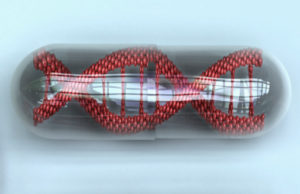β-thalassemia is one of the most common genetic diseases—especially in North Africa, the Middle East and Asia. About 60-80% of β-thalassemia patients require frequent red blood cell transfusions and iron chelation, and many of these patients suffer from severe complications of treatment. Currently, the only curative treatment is allogeneic hematopoietic-cell transplantation, but this treatment has severe side effects. In 2010, the first β-thalassemia patient was successfully treated with gene therapy. This month, The New England Journal of Medicine reported successful treatment of 22 β-thalassemia patients (12 to 35 years of age) with a lentivirus vector derived from the first patient. Autologous CD34+ cells from each patient were transduced ex vivo with the lentivirus vector and then reinfused. After a median of 26 months (range: 15-42 months), 12 of 13 patients with less severe forms of β-thalassemia (non-β°/β°) did not need transfusions, and in the 9 patients with a more severe form of the disease (β°/β° or equivalent) transfusion volume decreased by 73%. Several patients’ hemoglobin levels also approached normal ranges. No adverse events directly related to the vector were reported. Researchers plan to follow the patients for another 13 years.
References:

